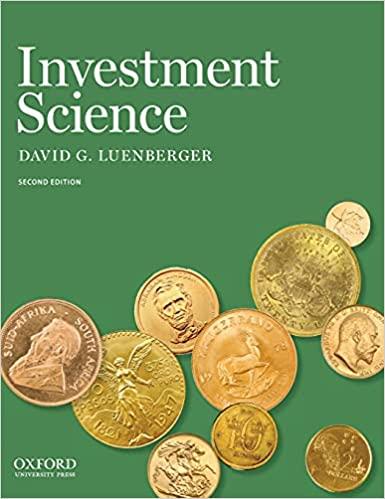Suppose there are (n) assets. Asset (i, i=) (1,2, ldots, n), has rate of return (r_{i}) over
Question:
Suppose there are \(n\) assets. Asset \(i, i=\) \(1,2, \ldots, n\), has rate of return \(r_{i}\) over a single period. There is also a risk-free asset with rate of return \(r_{f}\). The log-optimal portfolio over one period has rate of return \(r_{0}\), and we define \(P_{0}=1 /\left(1+r_{0}\right)\).
(a) Derive the pricing formula \[\bar{r}_{i}-r_{f}=-\frac{\operatorname{cov}\left(r_{i}, P_{0}\right)}{\mathrm{E}\left(P_{0}\right)}\]
(b) Suppose that over a small period of length \(\Delta t\) the return of asset \(i\) is \(1+\mu_{i} \Delta t+n_{i} \sqrt{\Delta t}\), where \(n_{i}\) is a normal random variable with mean 0 and variance \(\sigma_{i}^{2}\). Show that the discrete-time pricing formula in part \((a)\) goes in the limit, as \(\Delta t \rightarrow 0\), to the continuous-time log-optimal pricing formula.
Step by Step Answer:






